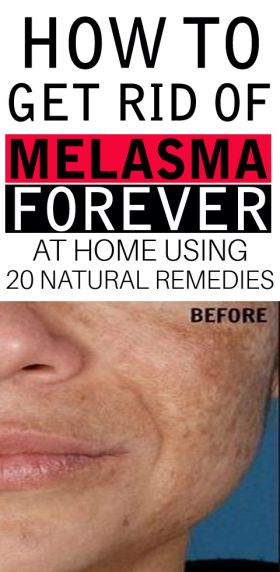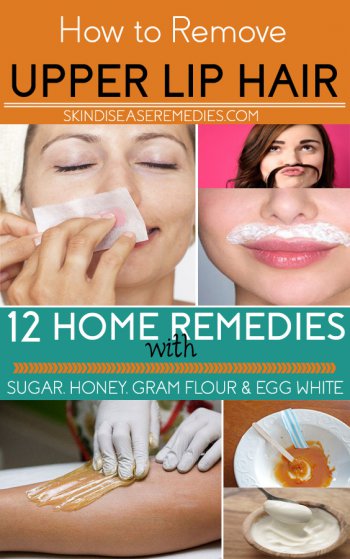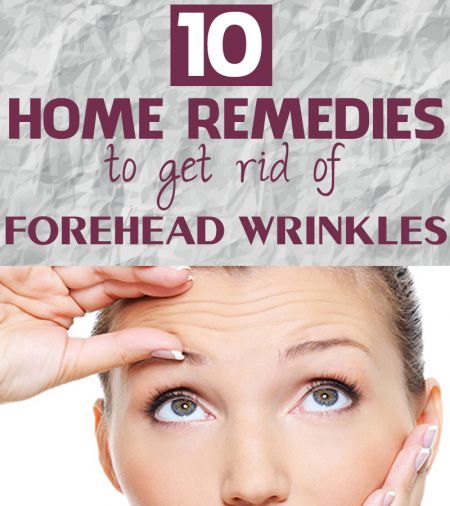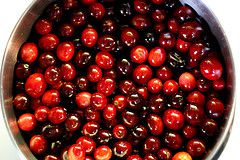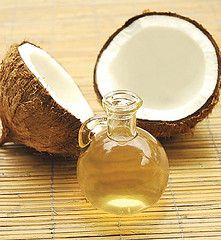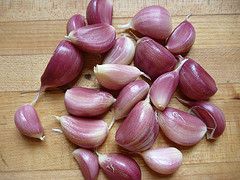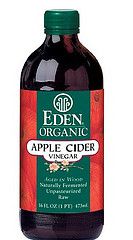
With simple beauty tips, you can get rid of whiteheads on nose.
You can literally remove those white bumps popping out of your chin, nose, and face overnight. There are a bunch of home available remedies to help you out.
Pick the one which suits with your skin and practices it regularly.
Prior to that let me give a brief view of whiteheads. Everyone knew that it spoils your appearance, but apart from that, it is the initial stage of acne. Excess sebum production and dead cells combined to form whiteheads.
Also read: How to Get Rid of Deep Black Heads on Nose?
What Causes of Whiteheads on Nose, Chin & Face
Dead cells, oil, and bacteria combine to block skin pores resulting in whiteheads. Fortunately, you can prevent these annoying bumps.
Clogged skin pores are the main culprit behind this skin disorder. There are several factors that block pores. Below mentioned are its main causes.
- Hormonal imbalance
- Oily skin
- Chemical incorporated beauty creams
- Bacteria and dead cells
Hormonal imbalance can occur due to various reasons like puberty, menstruation, pregnancy, and menopause.
Apart from this, birth control pills also increase hormone levels resulting in acne.
Studies also claim that hereditary may play a vital role in triggering acne or whiteheads.
Don’t squeeze whiteheads on the nose, because it will turn to the pimple and leave a scar. Instead, go through below listed home remedies to remove whiteheads on nose.
How to Get Rid of Whiteheads on Nose?
Impurities and pollutants around us accumulate on the face; apart from that, your skin itself sheds millions of dead cells, which block skin pores resulting in bumps known as whiteheads.
Like said, there are hundreds of home remedies which are known to remove whiteheads on nose and chin.
However, these natural ingredients aren’t backed by the scientific report. Instead, there are many anecdotal reports backing these claims.
Without any ado allow me to list step-by-step guide to wipe whiteheads.
Step: 1 (Cleansing)
To make the process easy, dip a washcloth in warm water. Wring excess water and hold the washcloth over whiteheads on the nose for about a minute.
By this simple step, sebum, bacteria, and dead cells can be removed easily.
Step: 2 (Home Remedy)
Here comes home remedy of your choice. For now, I’ll consider salicylic acid cream.
Prior to application of the cream, cleanse the face using gram flour mask. This innate home remedy is enough to remove whiteheads.
However, you can apply the salicylic cream on prewashed skin and leave it to dry naturally.
Note: People with sensitive skin must avoid salicylic acid cream, instead use egg white.
Step: 3 (Moisturize)
After 5-10 minutes, rinse the cream off with cool water to remove impurities trapped in the skin pores. Optionally, apply natural moisturizer like rosewater or olive oil to hydrate the skin.
Never apply lotions or makeup after this face mask treatment. Chemical ingredients penetrate into skin pores resulting in whiteheads.
Isn’t it simple?
Well now choose any home remedy from below list that suits your skin type. But, remember to patch test before using it on the face.
Else, ingredients can trigger an allergic reaction.
27 Home Remedies to Remove Whiteheads on Nose
I don’t say cosmetic creams can’t help you out. But, sadly there are few cases that report that repeated use of beauty products will damage skin’s elasticity and may even trigger skin ailments in sensitive people.
On the other side, home remedies aren’t accompanied by chemical ingredients and go well with your skin. Have a look at them.
Also read: Home Remedies for Glowing Skin in Summer
#1. Egg White to Remove Whiteheads on Nose
Vitamin A housed in egg white enhances healing abilities. It also penetrates deep into the skin to cleanse impurities accumulated in skin pores.
Assorted vitamins and minerals residing in egg white reduce excess production of sebum.
- Whisk egg yolk and apply egg white on the prewashed skin.
- You can use a brush to apply egg white on nose evenly.
- Place a thin tissue paper on the nose and leave it dry for about 30 minutes.
- Peel the mask gently in an upward direction, which will be removed along with whiteheads.
Wash your face with cool water and apply rosewater optionally to moisturizer.
Repeated use of this home available ingredient will prevent wrinkles and help to obtain whitening face.
#2 Cornstarch
Cornstarch mask can effectively remove impurities and excess sebum from the skin. Nutrients in this ingredient help to cleanse whiteheads and make the skin firm.
Antibacterial and astringent ability housed in apple cider vinegar help to remove whiteheads and fight acne-causing bacteria.
- Mix 2 tablespoons of cornstarch with 1 teaspoon of apple cider vinegar thoroughly.
- Wash your face as mentioned in step: 2 and pat dry.
- Apply cornstarch and vinegar mask over nose and rinse it off after 15-20 minutes.
#3 Gram Flour to Remove Whiteheads on nose
This is my favorite home remedy, this powder is filled with nutrients that can enhance your skin functioning and make it supple.
It removes excess sebum, fights bacteria, cleanses your skin and helps to obtain whitening skin.
- Take required amount of gram flour powder and add rosewater to make it thick paste-like
- Apply it over the nose and leave it to dry naturally.
- Its renowned cleansing properties remove whiteheads and excess oil from the skin.
#4 Expose to Steam to Remove Whiteheads
Steaming is an excellent way to remove dead cells, bacteria, and impurities of the skin. When your skin is exposed to steam, it unclogs skin pores and you can easily remove whiteheads.
- Boil 2 cups of water in a container.
- When the water comes to a boil, shift it to a bowl.
- Place your face over the bowl for about 5-10 minutes.
- Use a clean cloth to pat dry.
#5 Oatmeal Face Scrub
Oatmeal is prominent in exfoliating impurities and dead cells; this is the reason why cosmetic industries include this home ingredient in their expensive products.
Saponin residing in oatmeal suck impurities accumulated in the skin pores. Topical application of this ingredient will help to exfoliate your skin.
The natural absorbent ability of oatmeal soaks excess oil from the skin and its anti-inflammatory property reduce inflamed bumps.
- Mix grounded oatmeal with plain yogurt thoroughly.
- Wash your face and pat dry with clean cloth.
- Apply the face scrub evenly on nose and skin.
- Leave it to dry for about 15-20 minutes and then rinse it off.
Repeat the process twice in a week.
#6 Sandalwood to Remove Whiteheads on Nose at Home
With its excellent smell and exceptional properties, sandalwood can enhance collagen production and make the skin radiant.
Like above ingredient, it can soak excess oil on the face and nose. It also sucks dead cells and oil piled on your skin.
- Take required amount of sandalwood powder in a bowl and add rose water to make a thick paste.
- Wash your face and apply it over the nose.
- After 15-20 minutes rinse it off.
Apart from this, its skin whitening property can help to tone your skin and make it radiant.
#7 Lemon Juice to Remove Whiteheads on Chin
Acidic ability residing in lemon juice helps to remove excess sebum and dead cells.
Vitamin C housed in this ingredient enhances collagen production and remove impurities effectively.
- Slice a fresh lemon and squeeze its juice to collect in a bowl.
- Dip cotton ball and apply it on the nose.
- Do this twice in a week.
If you’ve sensitive skin, then stay away from it or apply a natural moisturizer.
#8 Sugar Scrub
Apart from making it delicious sweets, sugar can remove dead cells and impurities of the skin. Renowned for its exfoliating ability, this home available ingredient can do wonders on your skin.
- Mix honey with 1 tablespoon of brown sugar.
- Wash your face with lukewarm water.
- Pat dry and apply the mixed face mask.
- Leave it to dry naturally and rinse it off.
#9 Retinoid Cream
Vitamins and minerals packed in retinoid creams can effectively pull out whiteheads and restrain infection. Wash your face and apply this cream around the nose.
Apply olive oil at night before going to bed.
#10 Salicylic Acid Cream
Properties of salicylic acid will kill bacteria and thwart them. It also prevents acne-breakouts. Apply this cream on prewashed skin and leave it dry.
#11 Benzoyl Peroxide Cream
Keratolytic agent in this cream thwarts infectious bacteria and unclogs blocked skin pores. Apply the cream on prewashed face.
If you’re allergic to any of the above cream, stop using them.
#12 Honey to Remove Whiteheads on Nose
Antibacterial, anti-inflammatory and healing properties in honey are documented in religious and ancient books.
It can also effectively control excess sebum production and cleanse your face, nose, and chin.
- Wash your face to remove impurities and pat dry.
- Take raw honey in a bowl and apply on the nose.
- Allow it to dry naturally for 15-20 minutes.
- Rinse it off with water.
#13 Aloe Vera Gel to Get Rid of Whiteheads
Renowned for its healing activity, aloe gel hydrates the skin and helps to remove impurities because of its stick nature.
Its healing property can help to get rid of the itchy dry skin.
- Apply aloe gel to the skin and leave it dry.
- Use a wet cloth to wipe the mask.
- Instead, you can directly rinse it off with water.
#14 Plain Yogurt
Antibacterial and hydrating properties in plain yogurt can help to remove whiteheads and prevent acne.
Topical application of this ingredient can help to cleanse excess sebum, dead cells and other impurities.
- Mix turmeric with yogurt and apply it on your face.
- Allow it to dry for 10-15 minutes and then rinse it off.
- Excess use of turmeric will leave yellow stains on your face.
#15 Toothpaste
Assorted properties in toothpaste will strip excess oil and fight infectious germs. Apply toothpaste with a pinch of salt and rub over the skin.
Rinse it off after a couple of minutes. Make sure to reach experts before trying this home remedy.
#16 Tomato Get Rid of Whiteheads on Nose
Lycopene residing in tomato has acidic nature, which can clean impurities and dead cells.
It also has skin brightening ability that helps to reduce dark spots, acne scars and make the skin radiant.
- Grind tomato pulp and mix 1 tablespoon of brown sugar to it.
- Massage your face with this face mask for 10 minutes.
- Allow it to dry naturally for few more minutes and then rinse it off with water.
#17 Baking Soda
Mix required an amount of water to baking soda and apply it over the skin. It will remove impurities and prevents acne.
Ingredient in this face mask reaches clogged skin pores and help to eliminate oil, dead cells.
Sensitive skin people must stay away from it.
#18 Coriander Leaves
Healing properties in these leaves can treat acne and whiteheads.
Repeated application will lighten the appearance of scars, dark spots and make the skin supple.
- Take fresh coriander leaves and rub over the skin.
- Alternatively, you can blend them to make a paste to apply on skin.
#19 Milk
Add 2 tablespoons of milk with 1 teaspoon of lemon juice and 1 teaspoon of salt. Stir well and apply on the skin.
#20 Potatoes to Remove Whiteheads on Nose
Blend 1 potato into a smooth paste and massage it over the skin. Alternatively, you can rub with freshly sliced potato piece.
Vitamins housed in this vegetable help to cleanse impurities piled on your face and make the skin bright.
#21 Multani Mitti Mask
Excess oil accumulated in skin pores and dead cells piled on the skin can be removed by topical application of this home available ingredient.
- Mix 2 tablespoons of Multani mitti with rose water and plain yogurt.
- Squeeze few drops of lemon juice if required.
- Wash your skin and apply this clay mask over face and nose, after 15-20 minutes rinse it off.
#22 Rosewater to Get Rid Whiteheads on Nose
Rosewater is the one of the inexpensive and effective ways to cleanse your face. Prominent for its moisturizing and antibacterial abilities, this innate ingredient can effectively treat acne.
- Dip a cotton ball in rosewater and apply over nose regularly.
- It may take a long time; it’s an excellent remedy for people with sensitive skin.
#23 Apple Cider Vinegar
Astringent properties in ACV make your skin firm and also remove impurities from skin pores. Exceptional agents in ACV can kill bacteria and avoid acne break-outs.
- Dilute 1 tablespoon of apple cider vinegar with a cup of water.
- Using cotton ball apply the solution to the skin.
#24 Strawberries
Strawberry contains salicylic acid in it that is known to effectively treat acne, cleanse sebum and minimize skin pores.
- This delicious fruit can lighten dark spots and make your skin radiant.
- Along with it, assorted properties residing in this natural remedy can remove impurities.
- Mash strawberry and add raw honey to it.
- Apply over the face and leave it to dry.
#25 Tea Tree Oil to Get Rid of Whiteheads on Nose
There are a bunch of benefits this innate oil has for your skin. Dip a cotton ball in tea tree oil and apply over prewashed face.
High concentration of tea tree oil help to fight skin ailments and its antibacterial properties can thwart infectious bacteria and prevent acne.
#26 Rice Flour to Remove Whiteheads
Exfoliating is the cornerstone in removing whiteheads. You can make your own facial scrub at home.
Like other ingredients mentioned above, rice flour can absorb excess oil and cleanse impurities accumulated on the face.
- Mix 1 tablespoon of rice flour with (pinch) turmeric powder, (1 teaspoon) honey and (1tsp) lemon juice.
- Apply this face mask on the skin and leave it to dry.
- Assorted vitamins and minerals residing in this face mask can reduce the appearance of dark spots and scars.
Optionally, moisturize your face with rosewater.
#27 Wash Your Face to Get Rid of Whiteheads
Seems simple, but it’s very essential. Dead cells, bacteria and sebum pile over the skin blocking skin pores. Washing regularly will wipe them out.
Never use a cosmetic facial wash to remove impurities. Instead, use rice flour or gram flour to cleanse impurities.
Hydrating is the vital aspect of skin care routine, never miss to apply natural essential oil (mixed with a carrier oil) before going to bed.
How to Prevent Whiteheads on Nose?
Combine lifestyle and home remedies to prevent whiteheads, which will reduce excess sebum production and avoid buildup of dead cells.
- Cleanse your face regularly to remove excess oil and dead cells. However, over-washing may promote oil production and worsen the situation.
- Include ingredient or beauty cream that includes salicylic acid.
- Prefer beauty creams that are free from harmful chemical ingredients and that exhibit non-comedogenic ability.
- Drink enough water and ingest vitamin-rich diet to improve healthy functioning of the skin.
- Foods that trigger excess oil production must be avoided.
- Regular exercise for about 20 minutes will help to flush impurities off the skin pores.
- Most important avoid stress.
Let me know your views on the listed recipes to remove whiteheads on nose.



